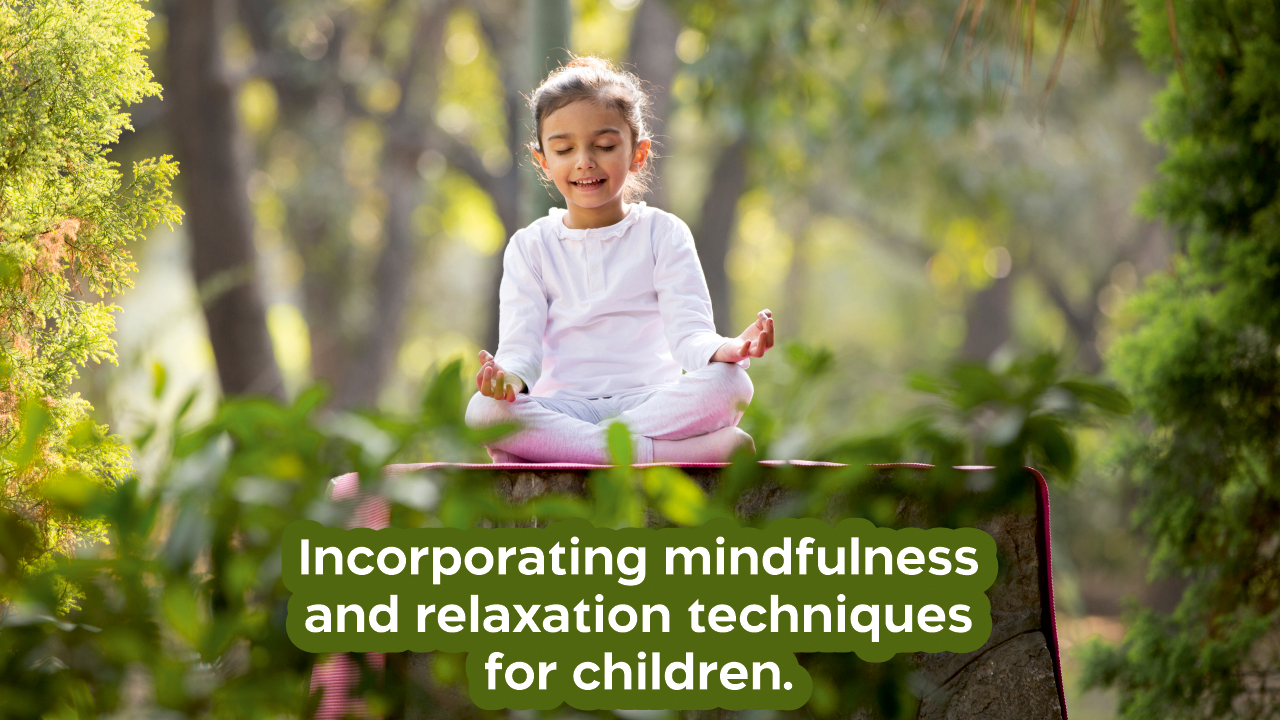In today’s fast-paced world, children often experience stress and anxiety, just like adults. Incorporating mindfulness and relaxation techniques into their daily routine can significantly benefit their mental and emotional well-being. These practices help children develop focus, emotional regulation, and a sense of calm. Here’s how parents can initiate mindfulness and relaxation techniques for children effectively.
1. Understand Mindfulness and Its Benefits: Mindfulness involves paying attention to the present moment without judgment. For children, mindfulness can improve concentration, reduce stress, and enhance emotional intelligence. Practising mindfulness helps children become aware of their thoughts and feelings, enabling them to respond to situations more calmly and thoughtfully.
2. Simple Mindfulness Exercises:
- Breathing Exercises: Teach children to focus on their breath. A simple exercise is to have them sit comfortably, close their eyes, and take slow, deep breaths. Instruct them to inhale deeply through the nose, hold for a few seconds, and exhale slowly through the mouth. Encourage them to notice the sensation of the breath entering and leaving their bodies.
- Body Scan: This exercise helps children become aware of physical sensations in their bodies. Have them lie down comfortably and guide them to focus on different parts of their body, starting from their toes and moving up to their head. Ask them to notice any tension or relaxation in each area.
- Mindful Eating: During snack time, encourage children to eat mindfully. Ask them to observe the colours, textures, and smell of their food before taking small, deliberate bites. This practice helps them appreciate their food and develop better eating habits.
3. Relaxation Techniques for Children:
- Progressive Muscle Relaxation: This technique involves tensing and then relaxing different muscle groups in the body. Guide children to tense their muscles for a few seconds and then release. Start from the feet and move upwards to the head. This practice helps release physical tension and promotes relaxation.
- Visualisation: Encourage children to use their imagination to visualise a peaceful place. It could be a beach, a forest, or any place where they feel safe and calm. Ask them to close their eyes and picture this place in detail, focusing on the sights, sounds, and smells. Visualisation can transport them to a tranquil state, reducing stress and anxiety.
- Yoga: Incorporate simple yoga poses into their routine. Poses like the Child’s Pose, Cat-Cow, and Tree Pose are easy for children to learn and practice. Yoga combines physical movement with mindful breathing, enhancing both physical and mental well-being.
4. Create a Mindful Environment: Parents can create a conducive environment for mindfulness and relaxation. Designate a quiet, comfortable space for these activities. Use calming colours and soft lighting to enhance the atmosphere. Incorporate nature sounds or gentle music to make the space more inviting.
5. Consistency and Patience: Incorporating mindfulness and relaxation techniques requires consistency and patience. Encourage children to practice these techniques regularly, but avoid making it feel like a chore. Use positive reinforcement and praise to motivate them. Gradually, these practices will become a natural part of their daily routine.
6. Model Mindfulness: Children learn by observing adults. Parents should model mindfulness in their own behaviour. Practice deep breathing, stay in the present, and manage stress mindfully. When children see these techniques in action, they are more likely to adopt them.
Incorporating mindfulness and relaxation techniques into children’s lives equips them with valuable tools to navigate stress and anxiety. These practices foster a sense of inner peace and resilience, helping children thrive both emotionally and academically. By creating a supportive environment and modeling mindful behaviour, parents can guide children towards a balanced and fulfilling life.


Stay connected, stay informed, and thrive with Narayana Educational Institutions!

